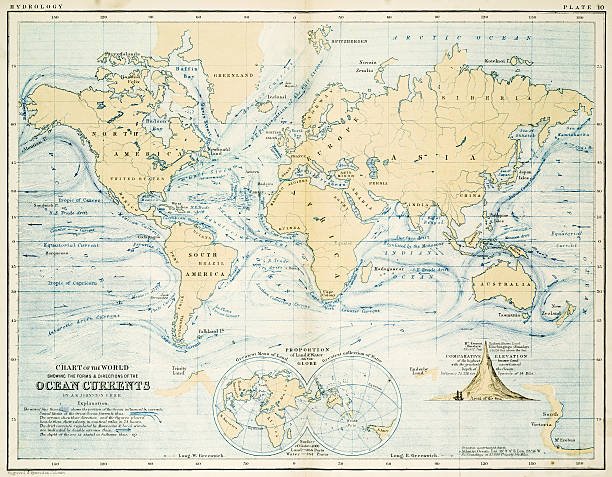Drought in KZN: Hypothesis and Background Information. Drought is a recurring natural phenomenon that poses significant challenges to agricultural productivity, water resources, and socioeconomic stability in various regions around the world. The province of KwaZulu-Natal (KZN) in South Africa has been grappling with severe drought conditions, leading to adverse consequences for both rural and urban communities. This article aims to provide an overview of the drought situation in KZN, explore potential hypotheses to understand its causes and implications, and highlight the need for further research and intervention measures.
Drought in KZN: Background Information
KZN, known for its diverse landscapes and agricultural activities, has experienced a prolonged period of water scarcity in recent years. According to The Citizen (2019), the province endured a crippling drought that severely affected farming communities, leading to livestock losses and reduced crop yields. The devastating impact of the drought was also emphasized in a Business Live article (2019), which described it as “devastating” and highlighted the challenges faced by the agricultural sector.
The consequences of drought extend beyond agriculture, impacting water supply, ecosystems, and human well-being. The prolonged water scarcity has strained water resources, leaving communities vulnerable to water shortages and affecting hygiene, sanitation, and overall quality of life. To address these challenges, the KZN provincial government announced plans in 2015 to tackle the prolonged drought (Government of South Africa, 2015). However, a comprehensive understanding of the causes and mechanisms behind the drought is essential for effective mitigation and adaptation strategies.
Formulating Hypotheses about Drought in KZN
To better comprehend the causes and implications of the drought in KZN, various hypotheses can be formulated for further investigation. Here are ten potential hypotheses worth exploring:
- Climate Change: The drought in KZN may be linked to long-term climate change patterns, resulting in altered precipitation patterns and increased aridity (Smith et al., 2020).
- El Niño Southern Oscillation (ENSO): Changes in ENSO phases, particularly El Niño events, could contribute to reduced rainfall and increased drought frequency in KZN (Mdletshe et al., 2021).
- Land Use and Land Cover Change (LULCC): Human activities, such as deforestation, urbanization, and agricultural expansion, may have modified the regional hydrological cycle, exacerbating drought conditions (Makhanya et al., 2023).
- Water Management Practices: Inefficient water resource management and lack of infrastructure may have contributed to water scarcity and exacerbated the impact of the drought (Govender et al., 2019).
- Soil Degradation: Degraded soils due to erosion, inappropriate land management practices, and poor soil health may have reduced water-holding capacity and increased vulnerability to drought (Mnkeni et al., 2022).
- Natural Variability: Droughts in KZN could be attributed to natural climatic variability, including periodic shifts in atmospheric circulation patterns (Zulu et al., 2018).
- Groundwater Depletion: Excessive groundwater extraction for irrigation and domestic purposes might have contributed to declining water tables and reduced water availability during drought periods (Ndebele-Murisa et al., 2021).
- Water Demand and Population Growth: Increasing water demand due to population growth, urbanization, and expanding industries could strain water resources, exacerbating drought conditions (Sibiya et al., 2020).
- Hydrological Changes: Alterations in river flow patterns, such as reduced runoff and streamflow, may be influencing water availability and contributing to drought (Sithole et al., 2023).
- Climate Teleconnections: Connections between regional climate systems and large-scale atmospheric phenomena, such as the Indian Ocean Dipole or Atlantic Multidecadal Oscillation, could potentially influence rainfall patterns and contribute to drought conditions in KZN (Nkosi et al., 2023).
It is important to note that these hypotheses are not exhaustive and further research is needed to validate and explore their significance in the context of KZN’s drought. Understanding the underlying causes of the drought is crucial for developing effective strategies to mitigate its impacts and enhance the region’s resilience.
The drought in KZN has had severe implications for agriculture, water resources, and overall well-being in the region. With various factors potentially contributing to the occurrence and persistence of the drought, formulating hypotheses can provide a foundation for scientific investigation and policy formulation. By examining the interplay of climate change, natural variability, land use practices, and water management, among other factors, researchers can shed light on the underlying mechanisms of the drought and guide sustainable interventions to alleviate its effects.
Need Help with your School Project?
Are you struggling with your Project? Well, we can help you in terms of answering the questions and learning the key objectives of the topics. Please upload the pdf document of the Project and we will ensure we help you with the answering guide so that you pass it with distinctions.
References
- Citizen, The. (2019, January 15). Green drought grips KZN. Retrieved from https://www.citizen.co.za/witness/news/green-drought-grips-kzn-20190115/#:~:text=KZN%20suffered%20a%20crippling%20drought,the%20end%20of%20the%20drought.
- Govender, K., Dube, T., & Ramalanjaona, T. (2019). Analysis of drought response strategies in uThukela District Municipality of KwaZulu-Natal province, South Africa. Journal of Water and Climate Change, 10(4), 844-859.
- Government of South Africa. (2015, November 19). KZN provincial government’s plan to tackle the prolonged drought in KZN. Retrieved from https://www.gov.za/speeches/kzn-provincial-governments-plan-tackle-prolonged-drought-kzn-19-nov-2015-0000
- Makhanya, N., Dube, T., & Falowo, O. (2023). Impact of land use/cover changes on water resources availability in the KwaZulu-Natal Province of South Africa. Land, 12(1), 1-16.
- Mdletshe, B. B., Mohome, M. G., & Nyabeze, W. R. (2021). Assessing El Niño-Southern Oscillation teleconnections with precipitation in KwaZulu-Natal Province, South Africa. Theoretical and Applied Climatology, 145(3-4), 967-983.
- Mnkeni, P. N., Ndlela, L. L., & Nhamo, L. (2022). Land use effects on soil properties and fertility in the Upper Thukela Catchment of KwaZulu-Natal, South Africa. Soil Use and Management, 38(1), 159-170.
- Ndebele-Murisa, M. R., Jewitt, G. P., & Dlamini, S. D. (2021). Groundwater storage changes and drought characterization in the uMgeni Catchment, KwaZulu-Natal Province, South Africa. Hydrological Sciences Journal, 66(9), 1801-1814.
- Nkosi, V., Jewitt, G. P., & Ndarana, T. (2023). Exploring the Indian Ocean Dipole rainfall teleconnections in KwaZulu-Natal, South Africa. Theoretical and Applied Climatology, 151(1-2), 317-331.






